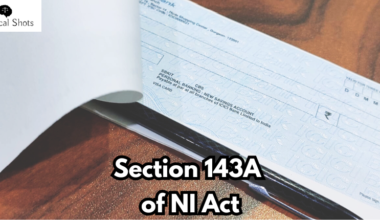Before 1926, Indian workers had no legal voice to demand better wages, better working conditions, or equal treatment. If they organized to express their concerns, it was often considered illegal. to address the injustice, the Trade Unions Act of 1926 was introduced. A law which intended to encourage employees to organize and formally establish unions. This Act has given workers the legal ability to form trade unions, register them, and protect their collective rights. Further, there is a detailed explanation of the rules, rights, and responsibilities of trade unions following registration. The Act’s primary goal is to ensure that employees can organize into legal associations, or unions, in order to defend their rights. Fair pay, job security, and working conditions are all improved by these unions. The law covers all types of worker unions and is applicable throughout India. It offers guidance on starting a trade union. It outlines the obligations and rules that trade unions have to follow. It gives trade unions specific legal rights and protections. It enables better communication between employers and employees.
- A Brief Overview of India’s Trade Union History
In India, trade unions first appeared in the early 1900s. The Bombay Postal Union (1907) and the Printers’ Union in Calcutta (1905) were two of the earliest unions ever recognized. Employees who desired better treatment and a voice at work founded these organizations.
Many more unions started to form after World War I. The All India Trade Union Congress (AITUC) was established in 1920 after the Madras Labour Union was founded in 1918. In 1921, Shri N.M. requested that the government enact legislation protecting trade unions in 1921. The Trade Unions Act of 1926 seemingly resulted from this request. Trade unions now play a significant role in India’s industries. A large number of them are also associated with political parties.
- Crucial Definitions in Trade Unions Act
Section 2(h) of 1926 Act defines Trade Union as “A team of employers or employees who band together to resolve issues at work and enhance working conditions”.
Section 2(g) defines Trade Dispute as “A trade dispute as an argument between employees and their employers, or between themselves, regarding issues such as pay, working conditions, or hiring/firing practices”.
Additionally, In O.K.Ghosh v. Joseph, [AIR 1963 SC 812] the Supreme Court expressed that it’s critical to understand that not all worker groups are trade unions. In Tamil Nadu NGO Union v. Registrar, Trade Unions [AIR 1962 Mad High Court] the Court ruled, for instance, that because tahsildars and sub-magistrates perform official government duties, they are not trade unions.
- Trade Union Registration
The Act’s Sections 3 to 14 addresses trade union registration.
4.1 How Do I Register a Trade Union? (Mode of Registration)
Section 4
At least seven employees must band together, decide to form a union, sign its constitution, and abide by the Act’s legal requirements in order for a trade union to be registered under the Trade Unions Act, 1926. Additionally, at the time of application, the union must have at least 100 employees, or 10% of the industry’s total workforce, as members. Additionally, on the application date, the union must still have a minimum of seven members from the same industry or workplace. The application will still be accepted even if a small percentage of the applicants (less than half) choose to leave the union before it is formally registered. The application is not canceled when they leave.
4.2 Application for Trade Union Registration (Section 5)
A Trade Union must submit an application to the Registrar in order to be registered. A copy of the Trade Union’s regulations and a statement with the following information should be included with this application:
- The members’ names, occupations, and addresses who are submitting registration applications.
- The names, occupations, and work addresses of the members must also be included in the application if it is a trade union for workers.The names, titles, ages, addresses, and occupations of the Trade Union’s office-bearers (leaders);
- The Trade Union’s name and the address of its main office.
A general statement of the Trade Union’s assets and liabilities must also be provided if it has been in operation for more than a year prior to submitting an application for registration. This statement must adhere to the rules’ format and contain all necessary information
4.3 A trade union’s constitution (rules) must contain the following essential elements in order to be registered under Section 6:
1. The Trade Union’s name.
2. The goals for which the trade union was established.
3. How its funds will be used.
4. An accurate membership list and access for members and office-bearers to inspect.
5. Each member must pay a minimum of 25 naye paise per month.
6. How to modify or repeal the rules.
7. How the office-bearers and executive members will be chosen and dismissed.
8. Access to account books and the manner in which the funds will be kept and audited.
9. Requirements for fines, penalties, or member benefits.
10. The trade union’s dissolution procedure.
4.4 Section 8.Registration:
After confirming that the Trade Union has complied with all registration requirements of this Act, the Registrar will register the Trade Union by entering the Trade Union’s information in the statement that goes with the registration application in a register that will be kept in the format that may be specified.
As held in ACC Rajanka Limestone Quarries Workers’ Union v. Registrar of Trade Unions (AIR 1958), through writ under Article 226 of the Constitution, a trade union may appeal to the High Court if the Registrar does not register it within three months of the application..
4.5 Section 9. Certificate of registration:
After registering a trade union under Section 8, the Registrar must provide a certificate of registration in the format specified, which serves as proof that the union has been properly registered under this Act.
Section 9A: Minimum requirements for trade union membership:
At all times, a registered trade union of workers must have at least 10% of the workforce or 100 workers, whichever is less employed by a company or sector with which it is affiliated as members.
The Registrar is satisfied that all of the TU Act’s main requirements have been met. When determining whether to grant registration, the Registrar must consider whether the technical requirements of registration are being met rather than whether the trade union can be considered legitimate. [Re: Stream Navigation Workers Union of India (AIR 1936 SC)]
4.6 Section 10. Cancellation of registration: The Registrar may withdraw or cancel a Trade Union’s certificate of registration.
a) Upon the Trade Union’s application to be verified in the way that may be specified, or
b) if the Registrar is convinced that the certificate was obtained fraudulently or in error, that the Trade Union has ceased to exist or has willfully and after notice from the Registrar violated any provision of this Act or permitted any rule to remain in effect that is in conflict with any such provision, or that the Trade Union has revoked any rule that provides for any matter provision for which section 6 requires:
c) Should the Registrar be convinced that a registered trade union of workers loses the necessary number of members?
With the caveat that the Registrar must give the Trade Union at least two months’ written notice outlining the grounds for the proposed withdrawal or cancellation of the certificate before doing so, unless the Trade Union requests it. Therefore, in accordance with the principles of natural justice, the Registrar must give the union two months’ notice before canceling the union’s registration. The Supreme Court ruled in B. Srinivasa Reddy v. Karnataka Urban Water Supply & Drainage Board Employees’ Association [(2006) 11 SCC 731 (2)] that a trade union that is not registered or whose registration has been revoked is not entitled to any protections under the TU Act or the IDA. This case emphasizes how crucial trade union registration is.
- Appeal under Section 11.
(1) Anyone who feels wronged by the Registrar’s decision to not register a trade union or by the revocation or withdrawal of a certificate of registration may file an appeal within the time frame specified:
(a) To the High Court in cases where the Trade Union’s headquarters are located inside the boundaries of a Presidency town, or
(aa) to the Labour Court or Industrial Tribunal, as applicable, in cases where the head office is located in a jurisdiction that falls under their purview;
(b) In the event that the head office is located in a different region, the relevant government may designate a judge in that region who is not less qualified than the court of an additional or assistant judge of a principal civil court of original jurisdiction.
(2) The Registrar must abide by the appellate court’s decision to either dismiss the appeal or issue an order directing the Registrar to register the Union and issue a certificate of registration in accordance with section 9 provisions, or to set aside the order for certificate cancellation or withdrawal, as applicable.
(3) An appellate court may, to the extent possible, follow the same process and have the same authority as it does when trying a suit under the Code of Civil Procedure, 1908 (5 of 1908) for the purpose of an appeal under sub-section (1). It may also specify who is responsible for paying all or a portion of the appeal’s costs, which will be recouped as though they had been awarded in a suit under the aforementioned Code.
(4) If a court appointed under clause (b) of sub-section (1) dismisses an appeal, the aggrieved party has the right to appeal to the High Court, which will have all the authority of an appellate court under sub-sections (2) and (3) for the purposes of such an appeal, and the rules of those sub-sections will apply appropriately.
Therefore, the Union may file an appeal, and the appellate court will have the same authority as under the 1908 Code of Civil Procedure.
- Registered office: Section12
A registered trade union’s registered office may receive all notices and correspondence.
Any changes to the head office’s address must be communicated within fourteen days of the change with the Registrar in writing, and the updated address will be noted in the Register mentioned in section 8.
- Registered Trade Unions’ Rights and Obligations
The Trade Unions Act gives a Registered Union specific rights, privileges, immunities, and liabilities that are covered below in order to differentiate it from an unregistered trade union:
- By virtue of the name it is registered under, it becomes a body corporate and separates from its members as a legal entity.
- It has a common seal and an endless succession.
- Both movable and immovable properties may be acquired and held by it.
- It has the authority to sign a contract.
- It has the ability to sue and be sued by the name under which it is registered.
The rights of trade union members fall under the fundamental right to freedom of speech and expression. This was established in the case of All India Bank Employees’ Association v. N.I. Tribunal [AIR 1962 SC 171].
- The union members’ right to convene
- The members’ freedom to relocate
- The freedom to express their opinions and talk about their issues
- The members’ property ownership rights.
Section 20. The ability to view the Trade Union’s books
A registered trade union’s account books and membership list are available for inspection by a office-bearer or union member at times specified by the trade union’s rules.
Section 21. Minors’ rights to trade union membership
Subject to any trade union rules to the contrary, anyone over the age of fifteen (15) may join a registered trade union, enjoy all member rights, execute all instruments, and provide all acquaintances required by the rules.
In Balmer Lawrie Workers’ Union, Bombay and Anr.v. Balmer Lawrie & Co. Ltd. and Ors [AIR 1985 SC 311], the Supreme Court’s fundamental premise was that all employees in the industry or industrial undertaking are represented by a recognized union.
- Conclusion
The Trade Union Act of 1926, which ensures the protection of workers’ collective rights, offers a strong legal foundation for workers to form and register trade unions. By laying out a clear registration and cancellation process, it offers structure and safeguards against arbitrary behavior. Registered unions with legal status are able to own property, enter into contracts, and effectively represent their members.
The Act promotes industrial harmony through worker empowerment and fair procedures. In order to protect workers’ rights and advance organized, lawful employee representation across India, it remains a crucial instrument.
The introduction to the Trade Unions Act, 1926 has been simplified by our intern, Ms Chaitali Bhivgade. She has been assisting the team in bringing informational legal blogs.








